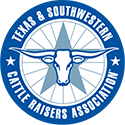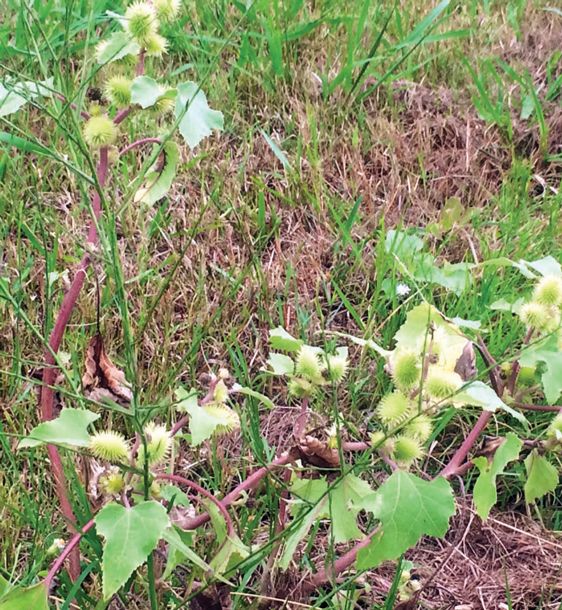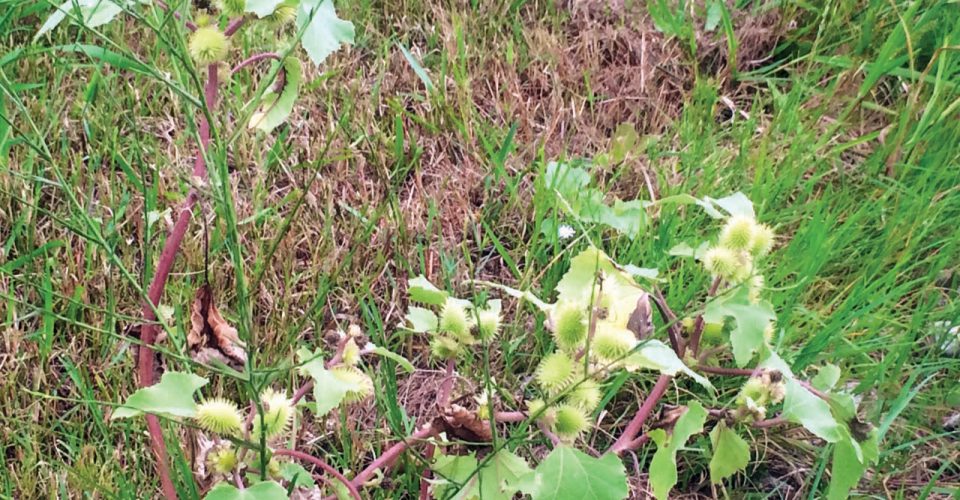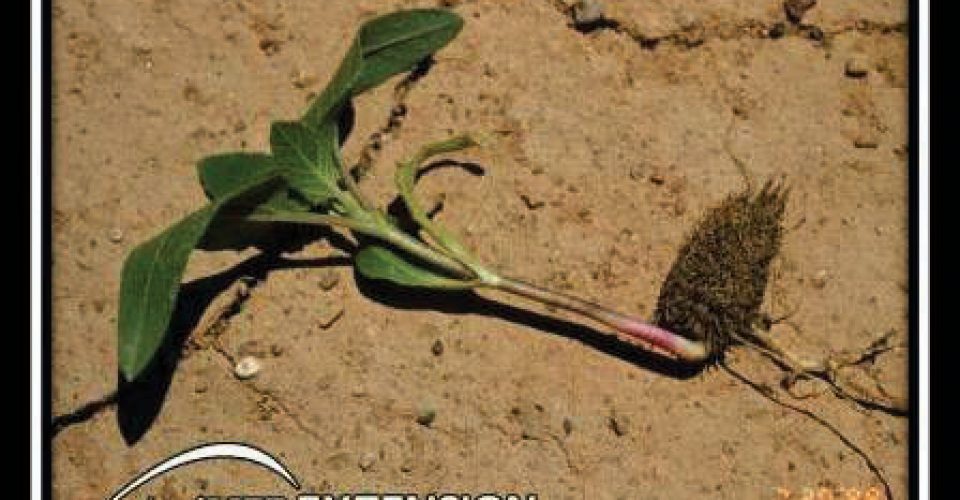Cocklebur (Xanthium strumarium)
The cocklebur is a native, annual, weedy species that can be found throughout the world. A very troublesome plant, it invades thousands of acres of rangeland each year.
Cocklebur is a member of the sunflower or aster family and is a very coarse plant that can reach a height of almost 50 inches. It is easily recognized by its spirally arranged leaves with deeply toothed margins.
- It is known as a “short day” plant because it initiates the flowering and seeding process late in the summer and early fall, when the days are shorter.
- Seeds are contained in a double-chambered seedpod that is covered by short, stiff, hooked spines, which stick to fur and clothing and are very hard to remove.
- Seeds can be spread for miles on the wind once the pod is broken open, due to plumes of silky hairs resembling a parachute.
- Cocklebur seeds have a compound that delays germination of other plant seeds and acts as a growth inhibitor.
- Seeds are rumored to be the inspiration for the development of Velcro.
- Plants have been used to make a yellow dye and as an ingredient in Chinese medicines.
- Seeds are sometimes sold to unsuspecting victims and children as “porcupine eggs.”
Cocklebur is known to be poisonous to domestic animals and ingestion of the plant can lead to death. Most animals will avoid the plant, but pigs are known to consume the plant, become ill and die.
Cocklebur can easily be controlled by a timely application of herbicides if it becomes a nuisance.
Editor’s note: Kent Ferguson, retired rangeland management specialist from USDA Natural Resources Conservation Service (NRCS), is providing us with plant identification photo stories to help ranchers identify those forbs, forages and species growing in the pastures. Additional photos provided by USDA NRCS.
Cocklebur is excerpted from the April 2016 issue of The Cattleman magazine.



